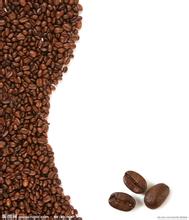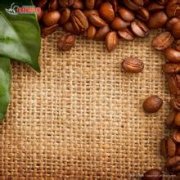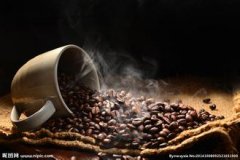A brief introduction to the treatment method of grinding degree and baking degree of lively and bright Yega Xuefei boutique coffee beans

Yejia Xuefei, nearly 2,000 meters above sea level, is one of the highest coffee producing areas in the world. It has been a wetland since ancient times. "Yirga" means "settle down" and "Cheffe" means "wetland". Lake Turkana, Lake Abaya and Lake Chamo bring abundant water vapor. The Rift Valley, represented by Misty valley, is foggy all the year round, like spring all the year round, with a gentle breeze, cool and humid, and thousands of coffee trees thrive, giving birth to the unique and unpredictable atmosphere of Yejia Xuefei's unique fragrance of flowers and fruits.
European monastic academics opened up a local coffee growing industry, which was later run by coffee communities or cooperatives in villages around the town. There are no special plantations here, and coffee trees are naturally scattered in the forest and countryside. During the harvest season, the Ethiopian Coffee Trading Company will go to town to buy coffee beans collected by farmers and eventually sell them under the brand name "Yega Xuefei".
Yega Chuefei exudes an extremely complex aroma and shows an extremely excellent taste that is difficult to describe. In general, the dry aroma of Yega Chuefei is full of fruit, with strong aromas of dried fruit, strawberry, mango and apricot jam. Wet fragrance is like sweet syrup, like sticky apricot juice, wrapped in plain honey or chocolate. The entrance is not strong, the mellow thickness is medium, the sour taste is not obvious, but it is lively and bright, like fruit black tea.
Sunburn Yega Chuefei Aretha Aricha G1 is currently the highest grade raw bean in Ethiopia. With our second hand selection, the high quality raw bean has a cleaner and smooth taste. It has reached a high score of 95 on the international cup testing website Coffee Review, which is really worth a try.
Gedeo Zone is located 4 kilometers west of the city of Yegashifi and is planted at an altitude of 1950-2100 meters. Coffee from November to February each year is sent to the Kebel Aricha coffee processing plant owned by Surafel Birhanu for processing and sale. The Ethiopian Yega Snow Coffee Aricha coffee treated by the sun comes from the Kebel Aricha producing area and is owned by Surafel Birhanu. The coffee is grown on about 650 to 700 small farms in the Gedeo district, 4km west of the town of Yega. After ripening, the coffee fruit is picked and sent to Kebel Aricha for processing, sorting and drying. The first few days of the sun
The refined washing treatment of raw coffee beans can be traced back to the mid-18th century. In the process of purification, the pulp of the red coffee fruit is first removed, and then the residual mucous membrane on the inner pericarp is removed by using a fermentation tank, followed by cleaning and drying.
Sun: after the beans are picked, they are directly exposed to the sun for about 3 weeks. During this process, the pulp will ferment, and the beans will absorb the flavor produced during the fermentation process, so the flavor is relatively rich. In the process of fermentation, the seeds are not consumed too much, that is, the sugar of coffee beans, which can produce rich aroma. Therefore, the aroma and flavor of the sun are rich.
Yega Xuefei's coffee trees were planted by monks in Europe and later transferred to farmers or cooperatives. Yega Xuefei is actually constructed by the surrounding coffee communities or cooperatives, including: Hafusha, Hama, Biloya.
These mountain villages are foggy, like spring all year round, with a gentle breeze in summer, cool but not hot, rain but not damp, and no cold damage in winter, giving birth to a unique regional flavor of citrus and flowers. Coffee trees are mostly planted in farmers' backyards or mixed with other crops in the field.
Important Notice :
前街咖啡 FrontStreet Coffee has moved to new addredd:
FrontStreet Coffee Address: 315,Donghua East Road,GuangZhou
Tel:020 38364473
- Prev

A brief introduction to the planting situation of Yega Xuefei Fine Coffee beans with Fruit and Flower fragrance, Geographic location, Climate and altitude
Since 2006, some coffee processing plants in some producing areas have adopted the exquisite elevated shed sun drying method, which invests in high-intensity human labor, which isolates the coffee fruit from contact with the ground and prevents the miscellaneous smell of soil in the process of sunlight. create an unusually clean fruit flavor. After more than two weeks of sun exposure, the dark brown coffee fruit is professionally stored, waiting for the whole
- Next

A brief introduction to the History and Culture of the Origin and Development of Matarimoka Fine Coffee beans
The coffee beans produced in Yemen belong to Arabica. Generally speaking, mocha beans are smaller than ordinary coffee beans and look very different from other coffee beans with large particles. However, although this kind of coffee bean is small, it contains distinct features, especially the distinct fruit acid often plays a role in flavor enhancement in mixed coffee. No wonder it is compared to the red in coffee.
Related
- Detailed explanation of Jadeite planting Land in Panamanian Jadeite Manor introduction to the grading system of Jadeite competitive bidding, Red bid, Green bid and Rose Summer
- Story of Coffee planting in Brenka region of Costa Rica Stonehenge Manor anaerobic heavy honey treatment of flavor mouth
- What's on the barrel of Blue Mountain Coffee beans?
- Can American coffee also pull flowers? How to use hot American style to pull out a good-looking pattern?
- Can you make a cold extract with coffee beans? What is the right proportion for cold-extracted coffee formula?
- Indonesian PWN Gold Mandrine Coffee Origin Features Flavor How to Chong? Mandolin coffee is American.
- A brief introduction to the flavor characteristics of Brazilian yellow bourbon coffee beans
- What is the effect of different water quality on the flavor of cold-extracted coffee? What kind of water is best for brewing coffee?
- Why do you think of Rose Summer whenever you mention Panamanian coffee?
- Introduction to the characteristics of authentic blue mountain coffee bean producing areas? What is the CIB Coffee Authority in Jamaica?

